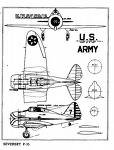Haztoys
Senior Airman
The Curtiss Hawk 75 won out over the Seversky P-35 as the Air Force fighter of the late 30's...And the Hawk was ground work for the P-40..And I've "herd" that the P-35 was the ground work for the P-47..(not sure how true the P-35/P-47 info is)
Would the Air Force been better off had they gone with the P-35...??
(Just got some old Airplane Magazines are a yard sale from the 70s and 80s..So Im a happy guy...LOL)
Would the Air Force been better off had they gone with the P-35...??
(Just got some old Airplane Magazines are a yard sale from the 70s and 80s..So Im a happy guy...LOL)




